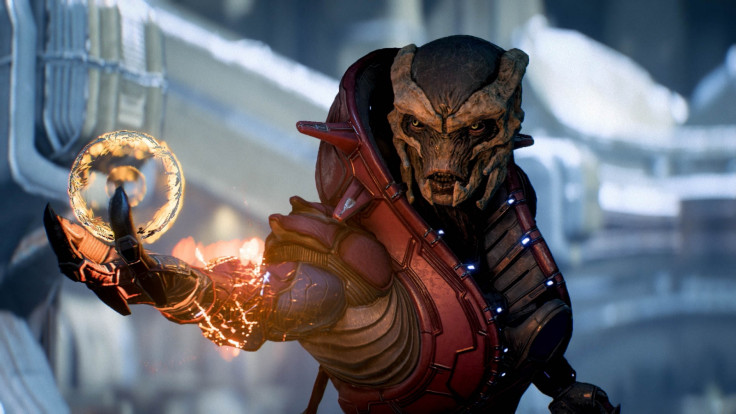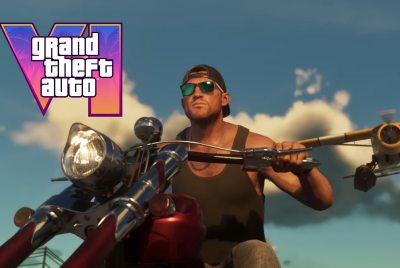Mass Effect Andromeda interview: How BioWare aimed to 'fulfill the promise of the original Mass Effect'
IBTimes UK sits down with lead designer Ian Frazier and art director Joel MacMillan.
Are we alone in the universe? It's a question that's inspired some of our greatest creative minds to look up and wonder what life in the infinite might be like. Back in 2007, BioWare gave us its version of an answer by introducing us to the world of Mass Effect – a vast re-imagining of our own galaxy teeming with all manner of life and otherworldly threats.
Through the eyes of Commander Shepard, players were given the chance to explore the galaxy aboard their own interstellar whip, make new allies (or perhaps spurn old ones), and alter the course of galactic history.
But that story has been told. Our choices set in stone. And with Shepard now the stuff of legend, it was time for the studio to reinvigorate the franchise and take us on a new adventure, this time to a galaxy far, far away.
This meant turning away from the Milky Way and charting a new course for Andromeda, but how could BioWare escape the shadow of the original trilogy without making long-time fans feel like aliens themselves?
Looking back, moving forward
"Quite early we tried to set this game as a spiritual successor to Mass Effect 1. In fact, at the top of our design document was the tagline 'fulfil the promise of Mass Effect 1,'" says Mass Effect: Andromeda lead designer, Ian Frazier.
"The original trilogy had a lot of powerful imagery. Things like the Citadel, the Normandy, and even Shepard's armour. We wanted to go through and find the right elements to bring forward into this one.
"So when you look at our Arks, or the Nexus, there's definitely some Citadel design inherited or applied and grafted into those. And that was a big discussion, because we were very conscious about not being overly self-referential, as there's a danger or a line where it's too much, you're not inventing enough, you're just leaning on the original franchise."
The team also had to decide which mechanics to bring across, and which to jettison completely. In some instances, it was a straightforward process. For instance, almost everyone agreed the combat in Mass Effect 3's multiplayer mode was the best in the series, so that became the foundation for Andromeda's streamlined system.
Beyond that, the main priority was putting Mass Effect 1 under the microscope to better understand what that game was trying to do. What was it promising players?
"You know, Mass Effect 1 was trying to infuse a lot of those deeper RPG elements. In fact, the first game was originally meant to have a crafting system, which is part of the reason we decided to put a crafting system into Andromeda," reveals Frazier.
"Then we looked at that idea of player choice, and giving them the ability to make a really unique character. We said, 'Well we're not doing Shepard, or Paragon-Renegade,' but we wanted to have another system that would let players do that. That's where the tone system came in, and the profile system to create the combat character you want to be."

A new frontier
Recapturing the first game's focus on exploration was also high on the agenda. "That idea of literally finding new worlds to discover and wondering what's over the horizon is something that Mass Effect 2 and 3 moved away from a bit. We wanted to bring that back," reveals Frazier.
That wanderlust pushed the team to make Andromeda an open-world affair, packed with sweeping planetary playgrounds to explore and even colonise. Designing the game's alien worlds was in many ways a process of trial and error, and though those you'll encounter in Andromeda might feel otherworldly, at one point they were more bizarre than you'll ever know.
"We went through a period where a lot of our concepts became quite extreme and abstract. It started to veer into this territory, and I use the term 'Dr Zeussy', because it started to feel like everything was made of stretchy bubblegum and it felt less grounded in science fact," recalls the game's art director, Joel MacMillan.
"It felt more like fantasy, and with Mass Effect we always try to build on a believable source. So we definitely had to go through those high-level concepts and ground them a little bit more. One of the ways we did that was by basing them on Earth biomes. Still extreme biomes, but based on a familiar source.
"For instance, we have these metallic planets – and we referenced Iceland heavily for those – but the visual hook was the idea of them being made from some metallic ore, and that the poles were creating some kind of turmoil and pulling these shards of metal through the terrain. So, you start with Iceland and then you go a little bit whacky, a little bit crazy like that."
We are not alone
As anyone who's played the original trilogy will tell you, one of Mass Effect's greatest accomplishments was its depiction of an intergalactic society that felt both relatable and distinctly unfamiliar.
Every species, from the robotic Geth to the avian Turians, had their own unique history, mannerisms, and sense of place in the universe. By the end of the trilogy they'd all become iconic. So as the team approached Andromeda, they knew one of the biggest hurdles would be introducing fresh faces that would stand the test of time.
"We went through a phase where we did a scattershot of dozens, maybe even hundreds of alien designs. Some of them looked quite alien, so what we found was – and we found this with the original trilogy as well – was that we had to adhere to certain configurations," continues MacMillan.
"For example, it's difficult to have a romance with something that looks like a big jello mould. It needs to have a familiar composition. And I think that was Gene Roddenberry's concept for Star Trek as well. If you look at a lot of the Trek aliens they are bipedal. They have eyes in the same places as us, and a mouth in the same spot. You can have a conversation with them."
BioWare took a leaf out of Roddenberry's book and used that template for all of its core races. After that, they explored pastures new, deliberately moving away from familiar concepts and designs in the hopes of uncovering something special. "For the Angara, early on we referenced aquatic imagery. We started looking at different textures we liked, that sort of iridescent patterning, so that became part of the Angara themes.
"For the Kett, we really liked the idea of the bone armour. We referenced a lot of Roman armour and clothing. A lot of Roman helmet designs became the base for how we handled the Kett's facial features and armour.
"For every design that made it into the game, there's likely a piece of concept art on the cutting room floor. Even those ideas that actually enter production aren't safe from the axe, and sometimes have to be canned for the greater good. That greater good being getting the game out on time.

"If you look at the Remnant enemy palette – the little robot enemies – there were a couple of those, the big destroyer and the little observer, that were originally built to fit together like a transformer," chimes in Frazier.
"We tried a number of ways to make that work, and ran into a number of technical hurdles with it. In the end we had to say 'you know what, this is kinda neat, but not neat enough to justify the amount of effort we're putting into it.' So we split them up and made them enemies in their own right.
"We had cases like that, where we tried to do a thing but realised it was more energy than it's worth. Then we have other cases where the animators – the people who have to rig the creature to make it work – look at it on a concept level and veto it straight away."
Finding a new path
Looking forward, it seems like BioWare is still wondering where to take the franchise after Andromeda. There are ideas swirling around the writers room already, but attempting to learn more about those at this early stage would be lunacy. As you'd imagine, the studio is keeping its cards clutched tight to its chest.
Even so, it's hard to talk about Mass Effect without thinking about the future. After all, the original Mass Effect was a game that promised big things, and for the most part BioWare managed to deliver on that promise. So, determined to catch a glimpse of what lies ahead, we asked the team where they'd take the franchise if they had all the cash and creative freedom they could ask for.
"Now that's an interesting question. You know, being in game development, sadly you never get to answer the question of 'if you had infinite money.' I think a lot of what I'd like to double down on if we move forward with the series from here would be choice and consequence," replies Frazier.
"I think we have an aspect of that in Andromeda, you had it in the trilogy, but I think there's also an opportunity to do a lot more exciting things in that space. To make your choices have stronger and more immediately obvious ramifications.
"Beyond that, I think we have a lot of cool tracks that we're on, and I'd just like to continue to develop down those roads. We have this foundation now, so instead of going in a completely different direction, lets see what we can build on that."
Stay tuned to IBTimes UK to hear what Frazier had to say about early visions of Andromeda and the negative feedback BioWare received following the game's release.
For all the latest video game news follow us on Twitter @IBTGamesUK.
© Copyright IBTimes 2025. All rights reserved.


















